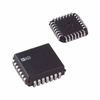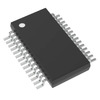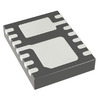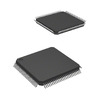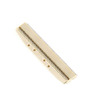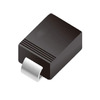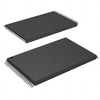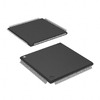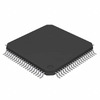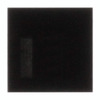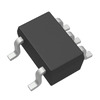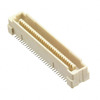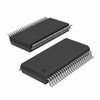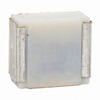Comprehensive Guide to BTA16 Triacs: Features, Pinout, and Datasheet
The BTA16 Triac series by STMicroelectronics stands out in the world of AC switching, offering high durability and efficiency across various applications. Known for its robust design available in both through-hole and surface-mount options, the BTA16 is highly valued in applications such as static relays, heating regulation, induction motor starting, and phase control in devices like light dimmers and motor speed controllers. Its insulated tab, rated at 2500V RMS, ensures compliance with UL standards, enhancing safety and reliability. This article explores the BTA16 series’ features, pin configuration, CAD models, practical applications, and integration insights, offering a comprehensive guide for you seeking effective solutions for AC control systems.Catalog

Overview of the BTA16 Triac Series
The BTA16 Triac series serves a wide array of AC switching applications, extending its reach across sectors such as static relays, heating regulation, and motor control circuits. The series offers flexibility with both through-hole and surface-mount packages, catering to different hardware needs. While often used in ON/OFF control scenarios, it also adjusts smoothly to phase control duties in dimmers and motor speed controllers. Versions featuring a snubber circuit enhance commutation abilities, providing a distinct advantage when managing inductive loads like motors and transformers. Furthermore, the BTA16 contains an insulated tab, granting greater electrical isolation that enhances safety and elevates performance.
The versatility of the BTA16 Triac series allows it to be effectively utilized across numerous applications. In static relays, it ensure consistent operation across diverse circuit conditions, thereby optimizing efficiency. Heating regulation circuits benefit from its strong performance, achieving precise temperature management. Within motor control circuits, the BTA16 facilitates more than just ON/OFF tasks, supplying dynamic speed modulation to meet advanced automation demands. In applications requiring phase control, like dimmers and motor speed regulators, the BTA16 Triac series excels. This process calls for meticulous power flow adjustment, something the BTA16 performs with notable precision. This accuracy is enhanced in snubber-equipped versions, which adeptly handle reactive traits of inductive loads such as motors and transformers. This capability fosters steady performance, curtails power surges, and extends the longevity of connected components.
Pinout Configuration

CAD Model Details
Footprint
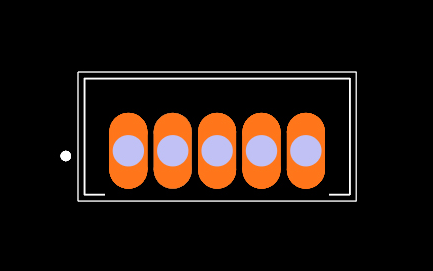
3D Model
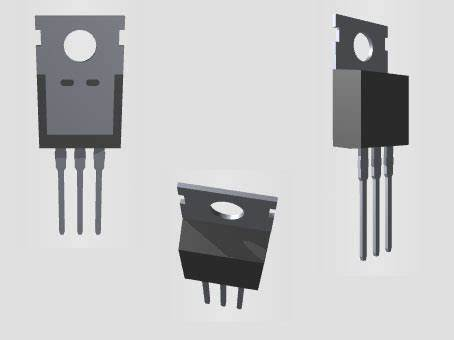
Features
|
Feature |
Description |
|
Medium Current Triac |
Suitable for applications requiring medium current
handling |
|
Low Thermal Resistance with Clip Bonding |
Ensures efficient heat dissipation |
|
Low Thermal Resistance Insulation Ceramic |
Provides improved insulation for the insulated BTA series |
|
High Commutation Capability |
Available in 4-quadrant (4Q) or very high 3-quadrant (3Q,
Snubberless™) variants |
|
UL1557 Certified |
Certified under UL1557 standards (file ref: 81734) |
|
RoHS Compliant |
Packages comply with RoHS Directive (2002/95/EC) |
|
Insulated Tab |
Rated for 2500 VRMS insulation for the BTA series |
Technical Specifications
Here is the technical specification table for the STMicroelectronics BTA16-700BRG.
|
Type |
Parameter |
|
Factory Lead Time |
11 Weeks |
|
Contact Plating |
Tin |
|
Mount |
Through Hole |
|
Mounting Type |
Through Hole |
|
Package / Case |
TO-220-3 |
|
Number of Pins |
3 |
|
Number of Elements |
1 |
|
Operating Temperature |
-40°C to 125°C (TJ) |
|
Packaging |
Tube |
|
JESD-609 Code |
e3 |
|
Pbfree Code |
Yes |
|
Part Status |
Active |
|
Moisture Sensitivity Level (MSL) |
1 (Unlimited) |
|
Number of Terminations |
3 |
|
Additional Feature |
UL Recognized |
|
Voltage - Rated DC |
700V |
|
Current Rating |
16A |
|
Base Part Number |
BTA16 |
|
Pin Count |
3 |
|
Configuration |
Single |
|
Case Connection |
Isolated |
|
Max Repetitive Reverse Voltage (Vrrm) |
700V |
|
JEDEC-95 Code |
TO-220AB |
|
RMS Current (Irms) |
16A |
|
Hold Current |
50mA |
|
Trigger Device Type |
4 Quadrant Logic Level Triac |
|
Voltage - Gate Trigger (Vgt) (Max) |
1.3V |
|
Current - Non Rep. Surge 50, 60Hz (Itsm) |
160A, 168A |
|
Current - Gate Trigger (Igt) (Max) |
50mA |
|
Leakage Current (Max) |
2mA |
|
Critical Rate of Rise of Off-State Voltage-Min |
400V/us |
|
Triac Type |
Standard |
|
Critical Rate of Rise of Commutation Voltage-Min |
10V/us |
|
Radiation Hardening |
No |
|
RoHS Status |
ROHS3 Compliant |
|
Lead Free |
Lead Free |
Ordering Information
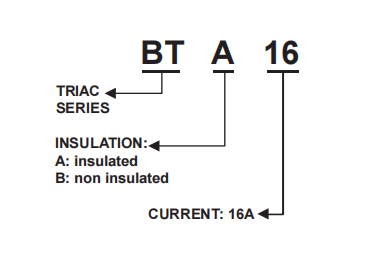
TRIAC Dimming Circuit
A standard TRIAC dimming circuit using the BTA16 Triac manipulates a capacitor's charge time to adjust the dimming level of a connected bulb. By employing a variable resistor (VR4) alongside a capacitor (C23), the circuit finely tunes the charging duration, thus setting the Triac's triggering moment. At a voltage of 220V, adjusting the charge length alters the bulb's brightness; extended charging illuminates more brilliantly.
Intricate Circuit Dynamics

Within this dimming system, components VR4 and R19 govern the charge time of capacitor C23. Once the voltage on C23 hovers at approximately 33V, the Triac engages, casting light. Subsequently, the DB1 thyristor facilitates current flow through the bulb. When current ceases, darkness returns, and the sequence begins anew. The cycle's duration is crucial, as shorter charge intervals yield dimmer light, while prolonged charges enhance brightness.
Premium-grade components, such as precision resistors and capacitors with minimal tolerance levels, fortify the circuit’s dimming stability and foresight. Addressing the heat issue of the Triac also proves advantageous—excessive temperatures may prevent circuit durability and dependability. Introducing suitable heat sinks and ensuring proper ventilation help circumvent overheating challenges. Utilizing TRIAC-based dimming circuits significantly curbs energy usage and facilitates smooth light-intensity transitions, striking a balance between energy efficiency and comfort. This appealing approach resonates well in both residential and commercial lighting scenarios due to its economical and effective outcomes.
Alternatives
|
Part Number |
Description |
Manufacturer |
|
BTB16-700C |
700V, 16A, 4 Quadrant Logic Level TRIAC, TO-220AB,
Plastic Package-3 |
STMicroelectronics |
|
BTA16-700B |
700V, 16A, 4 Quadrant Logic Level TRIAC, TO-220AB,
Plastic, Isolated TO-220AB, 3 Pin |
STMicroelectronics |
|
BTB16-700CRG |
700V, 16A, 4 Quadrant Logic Level TRIAC, TO-220AB,
TO-220AB, 3 Pin |
STMicroelectronics |
|
Q7015R6 |
Alternistor TRIAC, 700V V(DRM), 15A I(T)RMS, TO-220AB |
Littelfuse Inc |
|
BTB16-700CW |
700V, 16A, Snubberless TRIAC, TO-220AB, Plastic Package-3 |
STMicroelectronics |
|
BTB16-700SWRG |
700V, 16A, 4 Quadrant Logic Level TRIAC, TO-220AB,
TO-220AB, 3 Pin |
STMicroelectronics |
|
BTB16-700SW |
700V, 16A, 4 Quadrant Logic Level TRIAC, TO-220AB,
Plastic Package-3 |
STMicroelectronics |
|
BTB16-700BW/F5 |
700V, 16A, Snubberless TRIAC, TO-220AB, TO-220, 3 Pin |
STMicroelectronics |
|
Q7015L6 |
Alternistor TRIAC, 700V V(DRM), 15A I(T)RMS, TO-220AB,
Isolated TO-220AB, Thermotab-3 |
Littelfuse Inc |
Diverse Uses of the BTA16
Static Relays and Light Dimmers
The BTA16 series is prominent in static relays and light dimmers, facilitating precise ON/OFF switching and phase control. These elements are major in achieving a stable operation of lighting systems by adjusting the voltage delivered to the fixtures. Consequently, this function leads to energy conservation and extends the lifespan of the lighting equipment.
Motor Control Systems
Within motor control systems, including induction motor starters and speed regulators, the BTA16 series delivers remarkable results. In industrial settings, where fine-tuned speed regulation and smooth start-up are active to prevent mechanical stress, these components are highly valued. The BTA16 series is esteemed for its ability to sustain ideal motor performance while diminishing mechanical wear.
AC Switching Applications
In the world of AC (alternating current) switching applications, the BTA16 series excels in providing reliable and precise power control. Be it in household appliances or industrial machinery, the series ensures a secure and effective operation of electrical systems. Its hardy design minimizes downtime and maintenance, thereby enhancing system dependability.
Handling of Resistive and Inductive Loads
Featuring outstanding commutation performance, the BTA16 series is adept at managing both resistive and inductive loads. It offers consistent operation across various conditions, a testament to its significance in electronic circuits. Its capability to efficiently manage diverse load types highlights its adaptability and broad applicability.
Package

Manufacturer
STMicroelectronics was born from the fusion of Italy's SGS Microelettronica and France's Thomson Semiconductors in 1987, marking its place in the dynamic semiconductor landscape. Headquarters brilliantly positioned in Geneva, Switzerland, this company extends its influence through a strategic array of offices spanning the United States, Asia, and China. This international web enables STMicroelectronics to craft innovative solutions and deliver expert technical support to a wide array of industries globally, sparking advancements and fostering connectivity.
Within its illustrious offering, the BTA16 series stands as a testament to STMicroelectronics' dedication to semiconductor excellence. This series reflects their mastery in creating Triacs, designed to thrive in diverse applications and withstand challenging conditions. Their diverse product line includes microcontrollers, analog devices, sensors, and power management systems, serving substantial roles in contemporary fields such as automotive, industrial, and consumer electronics.
Datasheet PDF
BTA16-700BRG Datasheets:
About us
ALLELCO LIMITED
Read more
Quick inquiry
Please send an inquiry, we will respond immediately.
Frequently Asked Questions [FAQ]
1. What differentiates BTA16-800C from BTA16-800B?
The distinction between BTA16-800C and BTA16-800B lies in the trigger circuit IGT. BTA16-800B features an IGT<50mA, while BTA16-800C is endowed with an IGT<25mA, making its parameters more favorable. These models share STMicroelectronics (ST) lineage, with nomenclature as follows B for Bi-directional, indicating dual direction capability, A' for insulation; 'B' denotes non-insulation, 16' signifies a 16A current capacity, and 800' signifies a voltage rating of 800V
2. Is it feasible to substitute SCR BTA16-600B with BTB16-600B?
Though BTA16-600B may match the performance metrics of BTB16-600B, mechanical differences exist. The heat sink of BTA16-600B lacks a middle-foot connection, whereas BTB16-600B integrates this connection. For configurations without a heat sink, substitution is feasible. However, with a heat sink, especially when multiple thyristors are employed, ensure proper logic connection or resolve insulation issues with proper materials.
3. Can the BTA16 triac serve as a substitute for BTB16 in a fully automatic washing machine's control panel?
Interchangeability exists but adheres to original circuit insulation protocols: 'A' for insulated versions while 'B' is for non-insulated.
4. In what packaging is the BTA16 Triac series offered?
Available in both through-hole and surface-mount packaging.
5. Which BTA16 Triac series versions excel with inductive loads?
Snubbers are mostly adept at such applications.
6. What is the insulated tab voltage in the BTA series?
Rated at 2500V RMS.
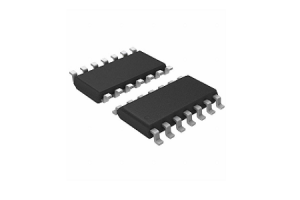
74HC132 Trigger: Datasheet, Alternatives, and Pinout
on November 7th
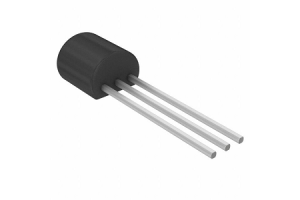
PN2222A: Datasheet, Applications, and Specifications
on November 7th
Popular Posts
-

What is GND in the circuit?
on January 1th 3036
-

RJ-45 Connector Guide: RJ-45 Connector Color Codes, Wiring Schemes, R-J45 Applications, RJ-45 Datasheets
on January 1th 2606
-

Fiber Connector Types: SC Vs LC And LC Vs MTP
on January 1th 2161
-

Understanding Power Supply Voltages in Electronics VCC, VDD, VEE, VSS, and GND
on November 13th 2064
-

Comparison Between DB9 and RS232
on January 1th 1788
-

What Is An LR44 Battery?
Electricity, that ubiquitous force, quietly permeates every aspect of our daily lives, from trivial gadgets to life-threatening medical equipment, it plays a silent role. However, truly grasping this energy, especially how to store and efficiently output it, is no easy task. It is against this background that this article will focus on a type of coin cell battery that may seem insignificant on the...on January 1th 1754
-

Understanding the Fundamentals:Inductance Resistance, andCapacitance
In the intricate dance of electrical engineering, a trio of fundamental elements takes center stage: inductance, resistance, and capacitance. Each bears unique traits that dictate the dynamic rhythms of electronic circuits. Here, we embark on a journey to decipher the complexities of these components, to uncover their distinct roles and practical uses within the vast electrical orchestra. Inductan...on January 1th 1704
-

CR2430 Battery Comprehensive Guide: Specifications, Applications and Comparison to CR2032 Batteries
What is CR2430 battery ?Benefits of CR2430 BatteriesNormCR2430 Battery ApplicationsCR2430 EquivalentCR2430 VS CR2032Battery CR2430 SizeWhat to look for when buying the CR2430 and equivalentsData Sheet PDFFrequently Asked Questions Batteries are the heart of small electronic devices. Among the many types available, coin cells play a crucial role, commonly found in calculators, remote controls, and ...on January 1th 1640
-

What Is RF and Why Do We Use It?
Radio Frequency (RF) technology is a key part of modern wireless communication, enabling data transmission over long distances without physical connections. This article delves into the basics of RF, explaining how electromagnetic radiation (EMR) makes RF communication possible. We will explore the principles of EMR, the creation and control of RF signals, and their wide-ranging uses. The article ...on January 1th 1618
-

Comprehensive guide to hFE in transistors
Transistors are crucial components in modern electronic devices, enabling signal amplification and control. This article delves into the knowledge surrounding hFE, including how to select a transistor's hFE value, how to find hFE, and the gain of different types of transistors. Through our exploration of hFE, we gain a deeper understanding of how transistors work and their role in electronic circu...on November 13th 1561



